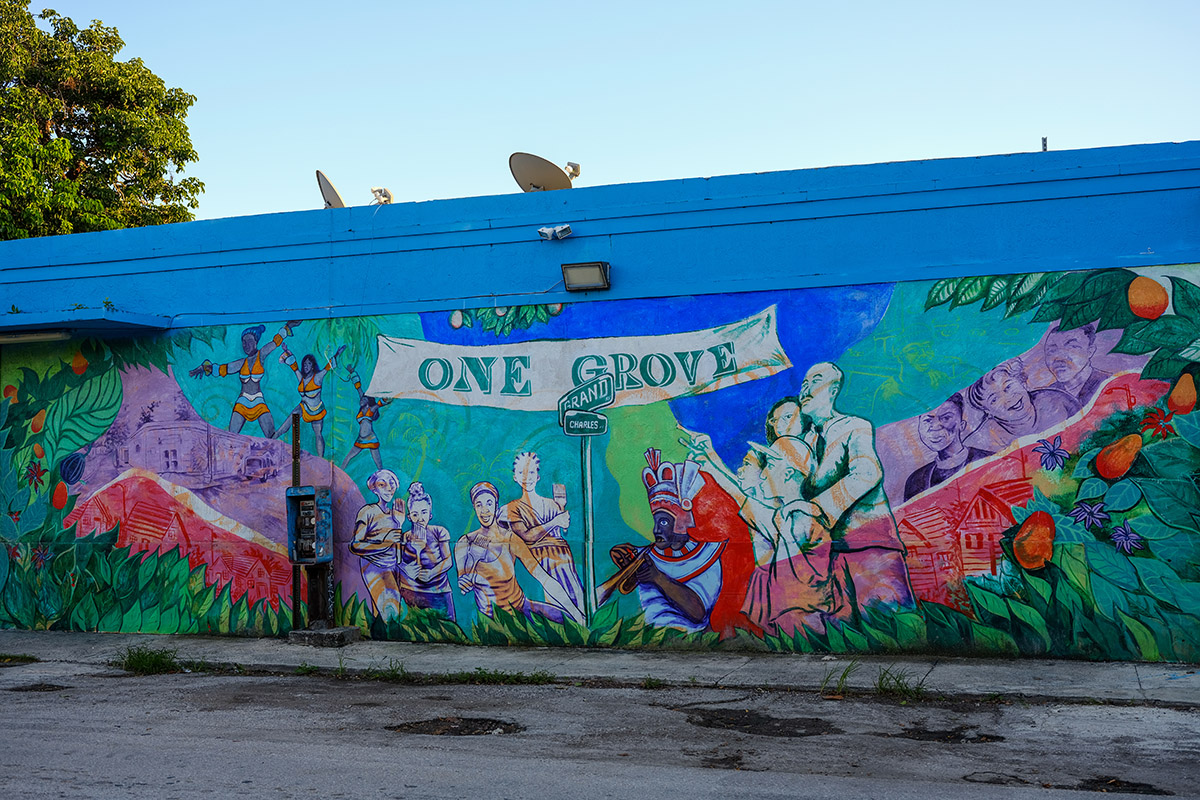Coconut Grove
The Black community of Coconut Grove was founded by Bahamians who migrated to Florida starting in the late 1800s. This led to the area being recently designated as “Little Bahamas”, although over its long history, the Grove has also attracted Black settlers from other parts of the United States. In 1925, the City of Miami constructed a trash incinerator in the neighborhood which regularly spewed toxic ash over the homes, yards, schools, and parks of West Grove. A lack of city supported sanitation services further contributed to an unhealthy environment. Despite these setbacks, the community thrived. Local businesses flourished and the academic and professional accomplishments of the graduates of the neighborhood schools created a sense of pride in the community at large. The end of segregation marked the start of the neighborhood’s decline. This loss of patrons who moved to other parts of Dade County led to once thriving businesses closing their doors. The crack epidemic of the 1980s increased the presence of law enforcement, violence, and community tensions. Two decades later the financial crisis of 2008 led to displacement by foreclosure.
Through these social and economic upheavals, the West Grove community has managed to retain sense of place, reinforced through the stabilizing presence of legacy homeowners and an active network of community organizations and churches. As the neighborhood gentrifies, residents are being pressured to sell their homes to developers. Many multifamily buildings are now just empty lots waiting to be redeveloped. Campaigns have been launched to stop or slow down such developments, but to little avail, leaving the future of this unique and historic community in peril.



